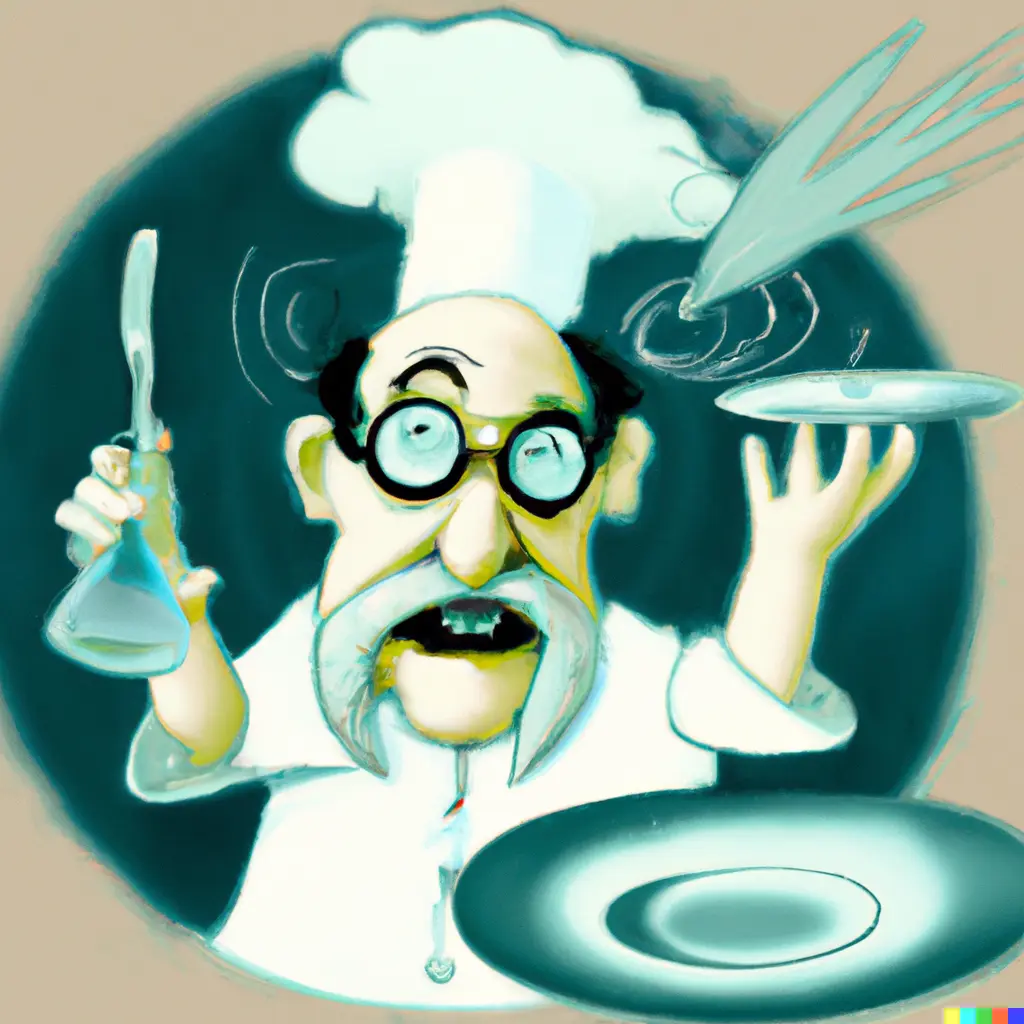TDG #005: Who sets the menu?
The world's best restaurant, NOMA is shutting down at the end of 2024. But are we missing the point?

By now, you have likely heard that NOMA, consistently voted as the Best Restaurant in the world by who-gave-you-authority magazine, is shutting down at the end of 2024.
Many jokingly blamed The Menu, a fantastic movie you should watch if you're reading this. But in reality, the truths of operating a restaurant and treating employees like humans caused NOMA to close its doors. But the timing was impeccable.
The announcement has sent the restaurant world into a collective frenzy, prompting chefs, writers, critics, and, dare I say...foodies...to wonder what does this mean for fine dining?
Is the fine dining model unsustainable? Are chefs leaving fine dining to work at more humble establishments?
Both may be true. But I don't really worry about the future of fine dining - it will exist as long as money exists.
In any case, who cares?
Most of what I've read about NOMA's closing is written from the chef's point of view - the working conditions of the chef (and restaurant crew) or even the unrelenting creative drive of a chef. But the other half of the equation is the patron.
The folks like us who choose to dine at the top places, who incessantly scour the internet for the "best of" lists, who want to eat at the cool joints, or even fly across the world to eat at a specific restaurant - we have just as much agency in the future of fine dining.
And so far, we've got it all wrong.
Growing up during the mid-aughts in Portland, Oregon (probably tells you more about me than you care to know), I had a pretty good vantage point for the culinary revolution that took place over the past twenty or so years.
For a while, it seemed Portland was THE food capital of the country, if not the world. We had the best coffee in the country, the best beer in the country, and chefs like Andy Ricker at Pok Pok (R.I.P.) making some of the best and most unique food in the United States.
To be fair, we also started food trends like doughnuts, enormous cupcakes, and weird ice cream, but we don't talk about those anymore.
For a while, it seemed like Portland was both the epicenter and wild west of culinary experimentation for the common folk. Was there snobbery? Yes, without a doubt. But it felt more confined to a niche group who thought predominantly with their stomachs.
Eventually, though, food became cool. And not only did it become cool, but it also became a signaling mechanism to show what you cared about - farm-to-table, the environment, animal rights, and sustainability writ large. As such, this type of food-oriented thinking spread to other people and parts of the country (and the world).
Fast forward a few years, when I first got to Washington, D.C., there wasn't much of a culinary scene. But slowly, more and more restaurants started to open. More Michelin stars were awarded. It felt like the hipster-millennial pallet had reached its peak CTRL + C, CTRL + V moment.
Did the food improve? Sure, but it started to feel a little hollow after a while.
I was once tangential (I won't say friends) to a group of folks who, in some attempt to escape their cubicle-enclosed life, liked to brag about all the Michelin-starred restaurants they had been to as if to say "I'm not just a project manager - I'm a sophisticated project manager." I can't imagine any of their gastronomical inclinations were much better than that of a 6-year-old, but they wore their restaurant hit list like a badge of honor.
On balance, this type of thinking over the past 10 or so years has probably been a net positive - people developed a deeper appreciation for food, where it comes from, and what it means. But eventually, the soul of the culinary revolution started to fade.
Of course, this has inevitably spilled over to the travel industry as a so-called "gastro-tourism" - food bloggers, lists, and media outlets, all hyping the restaurants YOU MUST go to on your next trip. And it worked; we started to dictate where we traveled based on these lists. You also saw this in your Instagram feed - friends, family, and influencers posting pictures of decadent meals as a not-so-subtle flex of their vacation prowess. In some ways, a new class of travelers was born - a derivative of the luxury traveler, the only difference was they spent their money at the likes of NOMA instead of the Ritz.
Those who grew up watching shows like Chefs Table and Parts Unknown finally had prime spending power. Of course, they spent their money on food-related experiences. And like most things, once too much money gets involved, we (the collective we) tend to run it into the ground, and we commoditize it until all the joy and fun have been squeezed out.
Let me say that I'm very, very guilty of this, no doubt. I haven't been to NOMA, but I have recently been to Pujol, #5 on the most recent World's 50 Best Restaurants list - that's right, folks, I know food. Of course, I did post about my trip to Pujol and my not-so-impressive pictures of way too expensive food all over social media (food photography is not my special skill).
And I definitely look at the likes of Eater, Timeout, etc., before I head to a new destination - hell, I have also written lists that tell people what and where to eat.
All that to say, I was a part of the problem.
Of course, these aren't all inherently bad activities. Researching your trip and finding out where and what you want to eat are all fun and useful things to do. But at this point, it feels like any sense of wonder and adventure that used to be found eating in faraway locales is long gone.
When Steph and I discuss our favorite meals, which comes up more often than you'd think, we usually circle around a restaurant called Kai in Galway, Ireland.
It was our first trip together, only three months into our relationship. It was late November, the air was crisp, the streets were wet, and the days were short. Tucked away into a cozy stone cottage a few blocks from the main streets in downtown Galway is Kai. We sat next to a crackling fire. The food was good, if not great. I had veal, and Steph had monkfish - I think. But in all honesty, the food is a relatively small part of why it constantly comes up in our mental restaurant rankings. It is the trip, the situation, and the nostalgia for that moment in time.
And so many other meals come to mind before Pujol when I think of my favorite or the best meal I've ever had. Maybe it was a night out with friends, getting a little sauced up, and having the best pizza at 2 am. Or even taco-touring my way through Puerto Vallarta. Or sitting next to a roaring fire in that cozy Irish pub.
And that's what those "best lists," fine dining, and gastro-tourism miss. Rather, it's what we miss. Everyone (well, the economically fortunate, at least) can eat at these restaurants, but nobody else can have those same moments - they are uniquely yours. And that's the beauty of food (and drinks), it has this way of facilitating such beautiful memories.
Too often, we conflate the quality of an experience with its importance. Those two things can overlap, but they are also vastly different.
I can't underscore how essential this idea is. Especially when we're all reading the same lists, blogs, guide books, and seeing the same shit on social media. Our collective travels are starting to converge and look the same. Trust me, if you ever want to find Americans in even the most remote destinations, just go to any of the restaurants from the Eater list wherever you are - you'll find them.
I still travel through my stomach. Wherever I go, the predominant question in my mind is, what can I eat and drink? This is still the best way to peek into the soul of a place. But as travelers, we can do better.
Put down the reviews. Follow your nose. Be curious. Be present. Appreciate the moment. That's when you'll have the best meal of your life.
